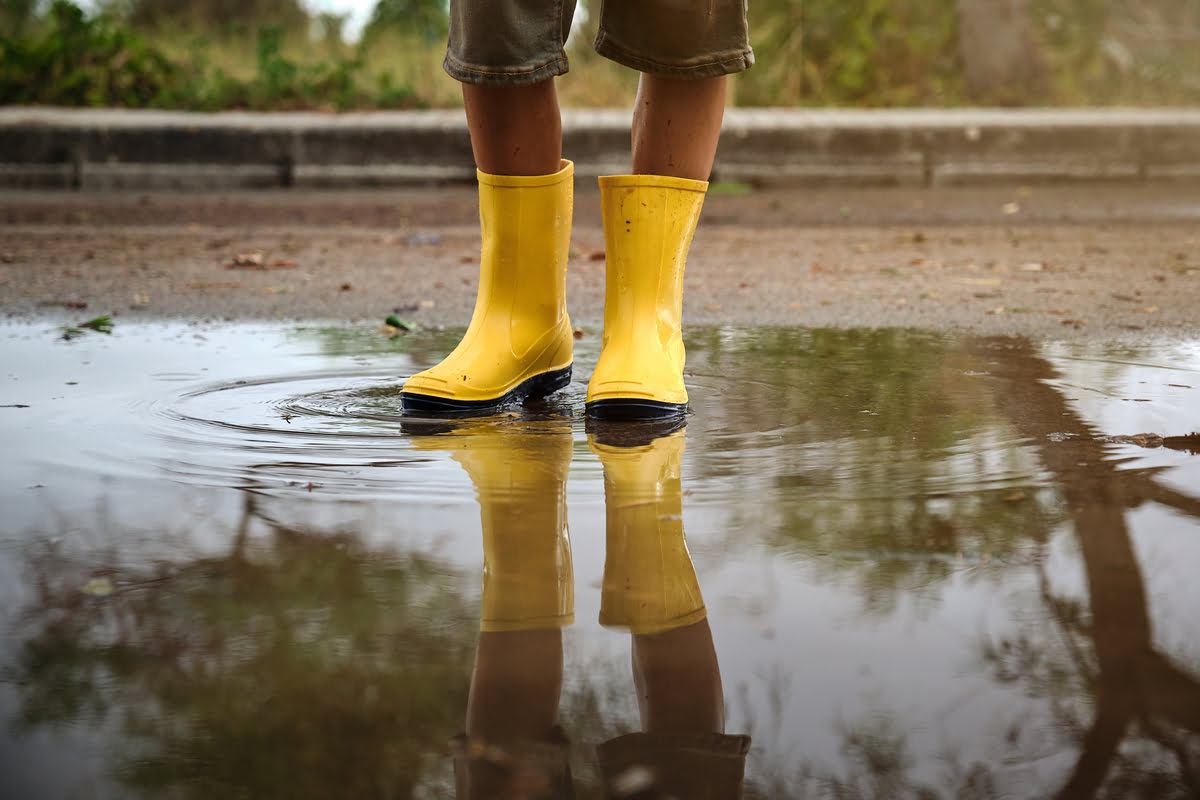My first “TikTok made me buy it” moment arrived six months into the pandemic. It was a pair of high-waisted black pleather pants from Aritzia that stylish, skinny women on my For You page kept raving about. The style was called the Wilfred Melina. In pre-Covid times, I knew exactly what I would’ve done before committing to the pants: Head to the closest Aritzia store in SoHo and try on pairs in various sizes. But stuck at home, buying the pants on impulse was my only option. Swiping out of the TikTok app, logging onto the Aritzia site, and pasting in my credit card information, I had just a few moments to dwell on my need for new pants.
Unfortunately, social media platforms want to eradicate those five precious minutes of deliberation. The pandemic has already upended our usual shopping habits, accelerating the sad but inevitable collapse of storied brick-and-mortar retailers. It might take more than a year of online shopping to fully quash our desire to try things on before buying, but social media and e-commerce sites are already banking on it. Almost three-quarters of apparel purchases were made online in February. The future of shopping is very clearly on the internet. The next frontier consists of fully integrated “social commerce” — in which social media apps become our official shopping destination — and livestream video shopping.
For the average shopper, the distinction between social commerce and e-commerce is almost irrelevant. The process is the same, after all. You see something you like on TikTok or Instagram or YouTube, and you buy it online (usually through an affiliate link or the direct brand site). For the purposes of this story, the dividing line is important. When you head to a specific site like Amazon, Target, or Aritzia to buy stuff, that’s considered e-commerce. With social commerce, the buying process is completed without ever leaving the social media app. More time within the app, as you can imagine, is better for that business.
The good news for social apps is that social commerce is growing by the millions, and has the potential to rival traditional e-commerce. According to an Insider Intelligence report, the number of social commerce shoppers grew by 25 percent from 2019 to 2020, from almost 64 million to 80 million consumers who buy items through apps like Instagram, Facebook, and Pinterest. Platforms have also leaned into this strategy during the pandemic: Most are signaling a greater investment in shopping, although the timeline to roll out these features is still uncertain. TikTok, for example, unveiled a public page in February devoted to its upcoming shopping function Seller University, and has partnered with Shopify to give sellers more opportunities to reach users. Snap recently acquired Fit Analytics, a company that helps people pick the right size of clothing when they shop online. And in February, YouTube announced its plan to expand e-commerce tools, which allows viewers to buy directly from creators.
But for users, the change may seem gradual. “Major changes on the apps are rarely going to happen overnight,” said Vic Matta, an associate professor in Ohio University’s analytics and information systems department. “Users don’t like big, abrupt changes since it could lead them to stop using the app. The key is small tweaks, which is why it seems like the platforms are slow to release a new function.”
The updates are often too minute for users to pay attention to. A “buy” button doesn’t change the core function of an app like Instagram or Pinterest. Still, the pandemic was a window in which our buying habits became more malleable: Quarantine — and an economic downturn — didn’t stave off Americans’ tendency for overconsumption, and social media platforms have only facilitated that urge. Online, we exist in a state of ambient shopping; either actively looking to buy something, or being told to by targeted ads or influencers.
Over the last year, platforms like Facebook were able to expand shopping offerings by developing tools for small businesses. Perhaps the most noteworthy change occurred with Instagram last fall. For the first time in years, the app’s home screen layout was radically reoriented to emphasize Reels (its alternative to TikTok) and Shops. The update briefly generated outrage, but most users eventually grew accustomed to the interface. Even though a small minority resisted these changes, it didn’t matter to a majority of users who were hooked on the app. Social media platforms will continue to prioritize profit, and these design decisions will have potentially long-term influence on shoppers’ behavior, particularly for members of Gen Z.
“Consumer behavior changes slowly,” said Abigail Holtz, founder of The Lobby, a video review marketplace for direct-to-consumer fashion brands. “If you think about what social media looked like five years ago, video wasn’t a big thing. Your feed was largely static. Now, with TikTok’s growth, we’ve seen platforms similarly push that as a format and reward creators for creating video content.”
Facebook and Instagram have also integrated live shopping functions to make it easier for creators and brands to sell items during streams. The Instagram algorithm reportedly boosts creators who actively post multiple times a week, across features like Stories, Reels, IGTV, and Instagram Live. “There is a sort of top-down motivation to pick up on this video technology,” Holtz said. That level of engagement might be unsustainable to most small businesses and creators, but the standard reinforces what users see and engage with on the app — and ultimately, how they shop. Here, sellers can connect to shoppers where they already are, turning scrolling into shopping. But in other parts of the e-commerce space, companies are trying to create a purposeful shopping destination.
The Lobby meshes together social video elements with online browser shopping; its goal was to elevate the online shopping experience through curation and personalized influencer reviews, all without ever leaving the site. The site partners with fashion-forward creators, who film themselves describing and trying on clothes from various brands. “At the end of the day, you only buy something if you like the product,” Holtz told me. “That’s why we have such a strong focus on brands and their products. We look at video shopping, influencers, and livestream as features that a platform can provide, but people are only moved to buy something if they really like it.”
The Lobby’s concept of a middleman marketplace is appealing to those who enjoy thinking through their purchases, but platforms and e-commerce sites like Amazon are working to eliminate that thought process — to turn people into impulse shoppers. “When Amazon created the one-click buy button, it planted the seeds to make livestream shopping possible and popular,” Matta said. “It’s in Amazon’s interest to support impulse buying. The ease of use on the platform has to be so easy that consumers don’t even have time to think.”
However, payments on Instagram and Facebook are still “clunky and disjointed,” Matta added, since the checkout process is not yet fully streamlined. As a result, sellers are sending users off the app to a browser to complete their payment, which goes against the interests of a platform to keep people within the app while buying. For example, I left the TikTok app to make my pants purchase on Aritzia’s mobile website. That action leads shoppers to see Instagram or TikTok more as places to discover new brands and trends, rather than as marketplaces to shop from.
That isn’t a problem for Amazon, the preeminent marketplace for online sellers. But as more platforms shift toward commerce and supporting small businesses, Amazon’s dominance in the space could dwindle. Plus, there will be new companies looking to help sellers launch, manage, and market their virtual storefronts on Instagram or TikTok. “Success in e-commerce,” as Patrick Sisson explained in a Vox article on Shopify, “often comes down to friction and the lack thereof.”
For Amazon, the competitive solution appears to be in Amazon Live, its live shopping feature. The company has recruited influencers and opened applications for the Amazon Influencer Program, which allows participants to earn a 1 to 10 percent commission rate from Amazon Live sales. Live shopping, while immensely popular in Asia, has yet to fully catch on in the United States, but some see it as the digital generation’s Home Shopping Network or QVC.
“The business model for live shopping in Asia is more like QVC,” said Danielle Li, the founder of Popshop Live, a livestream shopping marketplace. The attitudes toward shopping in Asia, especially China, are also culturally distinct: People consider shopping a hobby, rather than an occasional act of personal indulgence. Copying technology from Asia, then, won’t appeal to American consumers, Li said. “Instead, we have a greater focus on entertainment and community, and allow viewers to build an emotional connection with the seller.”
While platforms like Facebook and Instagram (and soon, TikTok) have integrated live shopping features, Popshop is one of the few apps built specifically for this shopping medium. Currently, most of Popshop’s streamers are brick-and-mortar retailers, since they have enough product inventory to host an hours-long stream. There was also an added urgency to work with retailers, Li said, especially those who’ve had to shut down their physical stores due to Covid-19.
According to Li, live shopping appeals to not just Gen Z, but older shoppers who grew up watching home shopping channels. “There’s the assumption that the internet polarizes people from different age groups, but I think this is appealing to people from all sorts of backgrounds,” she said. The app eventually plans to work with influencers at a greater capacity, but at its current stage, the team’s current focus is helping shop owners and brands. Meanwhile, Amazon has attracted talent by providing a new revenue stream for creators: It has the potential to be one of their most lucrative activities, one YouTuber told Business Insider. In other words, instead of meeting consumers where they already are — on social apps — Amazon is hoping to lure our favorite personalities, and make Amazon the premier place to mindlessly shop.
On their own, however, most influencers have yet to integrate live shopping into their content streams. The purchasing potential, however, is already there through years of YouTube haul culture and the popularity of hashtags like #tiktokmademebuyit and #amazonfinds. The viral power of TikTok has allowed certain products and brands to garner cult followings, intentionally or not. After all, it only takes 10 to 15 seconds to introduce millions of people to a product and convince them to buy it; it’s only a matter of time before buying an item becomes as easy as swiping up on an Instagram Story.
“Social commerce and live shopping are similar in that they leverage instant purchase,” said Matta, the Ohio State professor. “The people who are willing to do that are younger, usually millennials or members of Generation Z. The technology for that is here, but it just hasn’t been embraced yet by all segments of the population.”
Unlike consumers in China, who view shopping as a hobby, consumerism in America is a sort of passive activity. We are programmatically encountering must-have products on our feeds without searching for them. A return to social life might not be the saving grace of brick-and-mortar retailers; Matta expects a subset of customers to resume in-person shopping, but that isn’t enough to stave off the retail apocalypse. In quarantine, social media encourages conspicuous consumption. As buying becomes increasingly frictionless, we don’t need life-altering events or even active decision-making to encourage us to spend. We just have to rely on our basest impulses.






